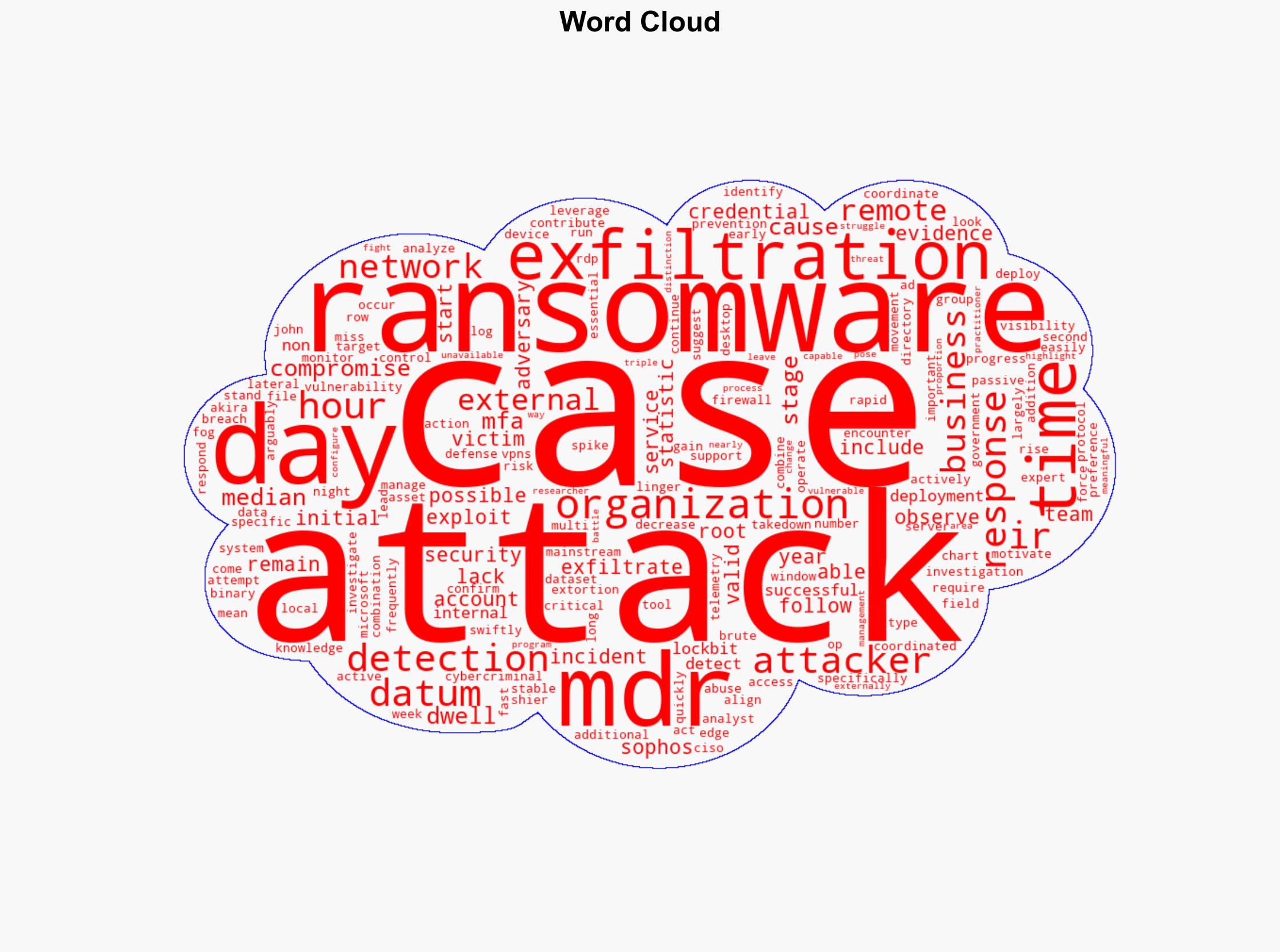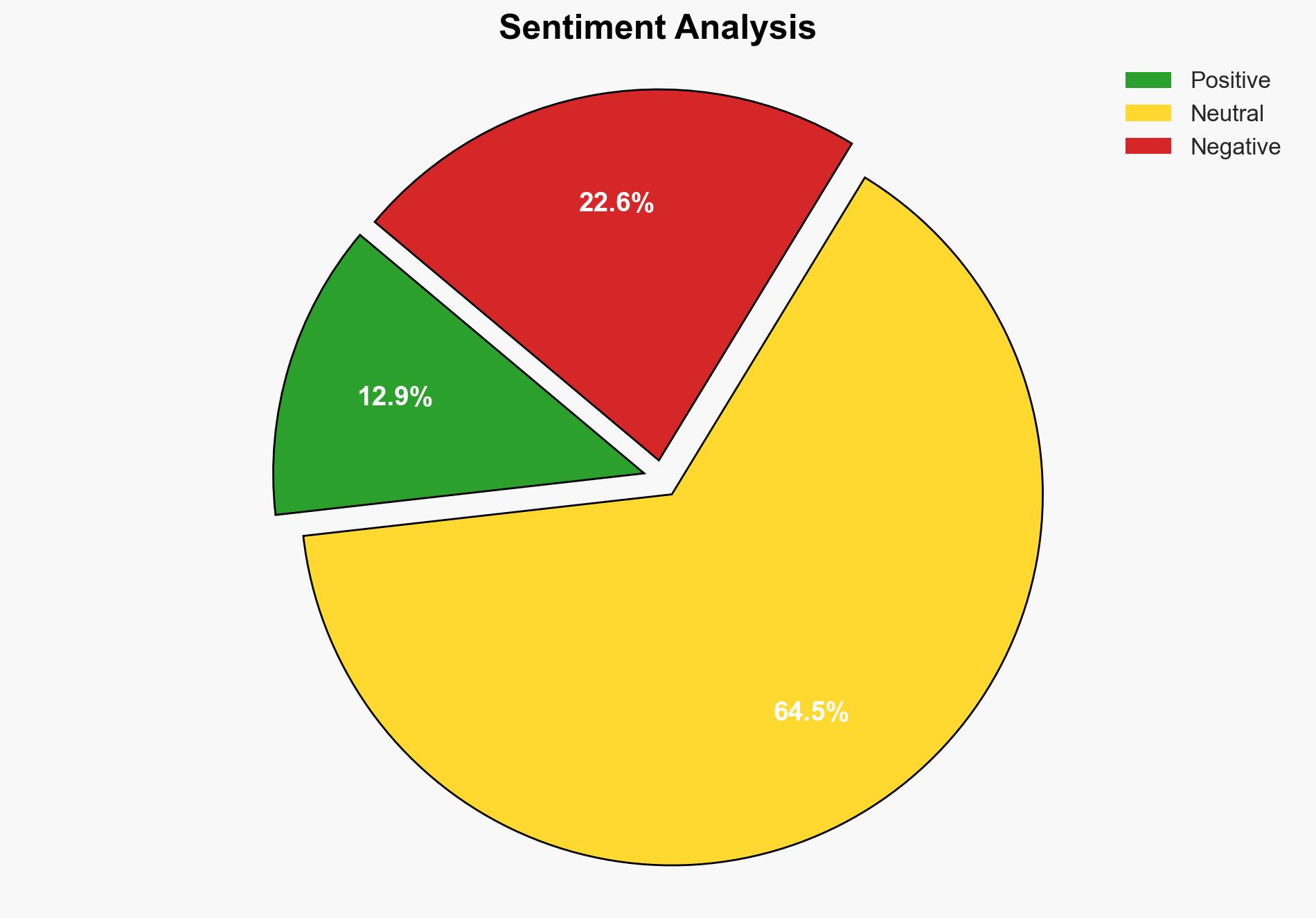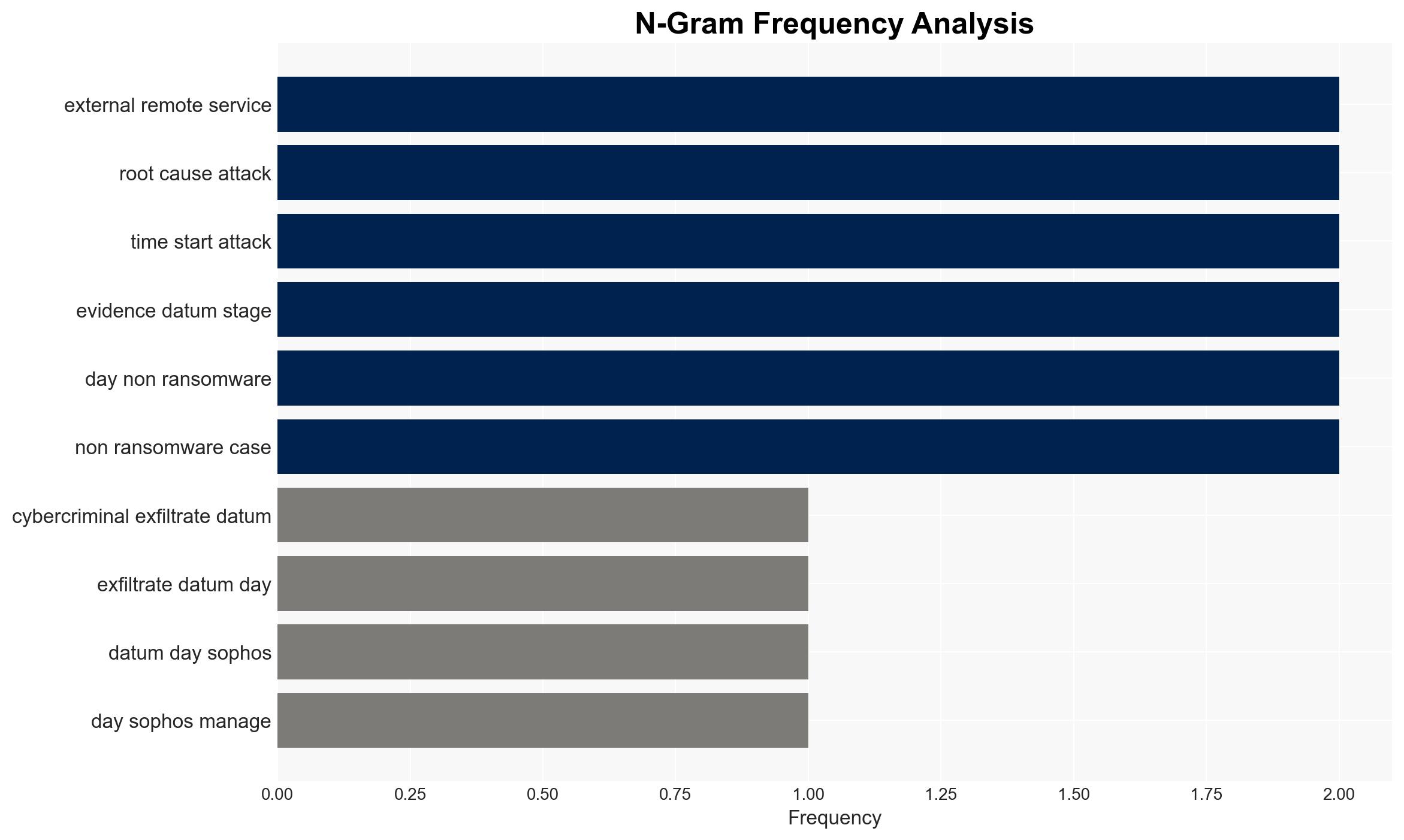Cybercriminals exfiltrate data in just three days – Help Net Security
Published on: 2025-04-03
Intelligence Report: Cybercriminals Exfiltrate Data in Just Three Days – Help Net Security
1. BLUF (Bottom Line Up Front)
Cybercriminals are increasingly efficient in exfiltrating data, with a median time of just three days from initial access. The primary methods of attack include exploiting external remote services and using compromised credentials. Organizations lacking visibility and rapid response capabilities are at heightened risk. Immediate improvements in detection and response strategies are critical to mitigating these threats.
2. Detailed Analysis
The following structured analytic techniques have been applied for this analysis:
General Analysis
The analysis reveals that cybercriminals often gain initial network access through exploiting external remote services, such as VPNs and firewalls, or by leveraging compromised credentials. This method has been the leading cause of attacks for two consecutive years. The rapid progression from initial access to data exfiltration, often within hours, highlights the sophistication and speed of these adversaries. The lack of visibility into network activities and insufficient logging are significant contributors to the success of these attacks. Moreover, the deployment of ransomware has shown a preference for business hours, indicating a strategic approach to maximize impact.
3. Implications and Strategic Risks
The rapid exfiltration of data poses significant risks to national security, economic stability, and organizational integrity. The trend of exploiting remote services and compromised credentials suggests a persistent threat that could destabilize critical infrastructure. The potential for data extortion and ransomware attacks further exacerbates these risks, potentially leading to financial losses and reputational damage.
4. Recommendations and Outlook
Recommendations:
- Enhance network monitoring and logging capabilities to improve visibility and early detection of suspicious activities.
- Implement multi-factor authentication (MFA) across all access points to reduce the risk of credential compromise.
- Conduct regular security audits and vulnerability assessments to identify and mitigate potential entry points.
- Invest in advanced threat detection and response solutions to enable rapid action against emerging threats.
Outlook:
In the best-case scenario, organizations that adopt robust security measures and improve their response capabilities will significantly reduce the risk of data exfiltration and ransomware attacks. In the worst-case scenario, continued vulnerabilities and slow response times could lead to increased incidents and severe impacts on critical sectors. The most likely outcome is a continued trend of cybercriminals exploiting weak points, necessitating ongoing vigilance and adaptation by organizations.
5. Key Individuals and Entities
The report mentions John Shier as a key individual involved in the analysis of ransomware deployment and data exfiltration trends. No specific roles or affiliations are provided for individuals or entities.





